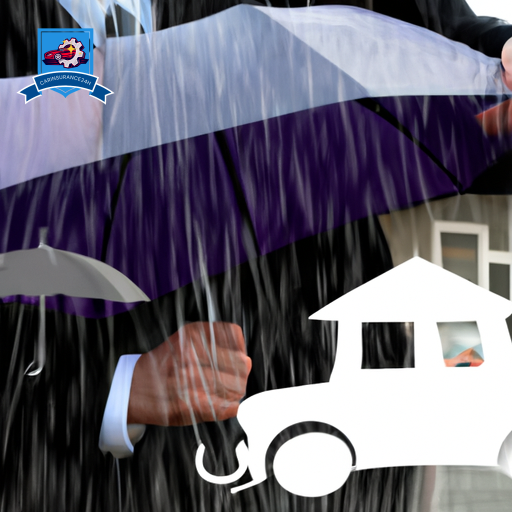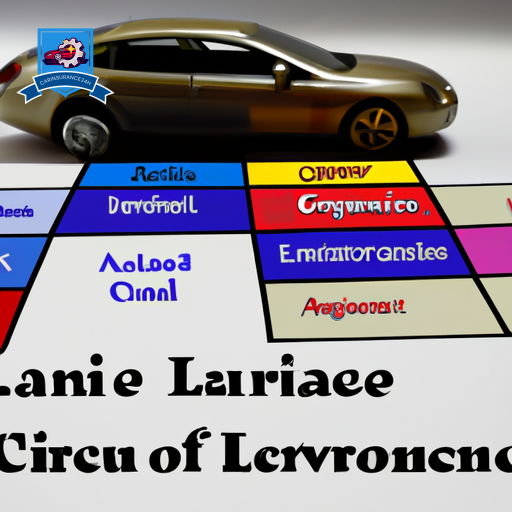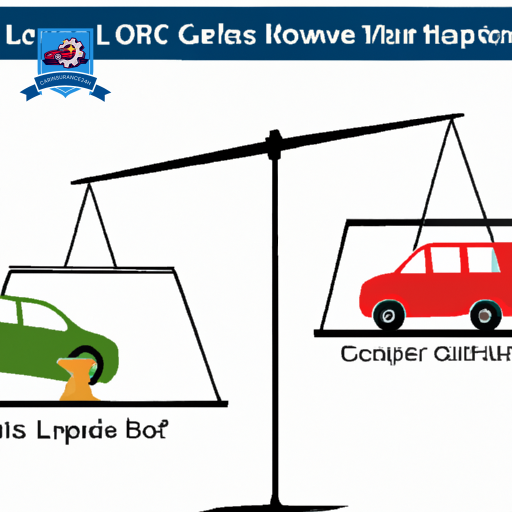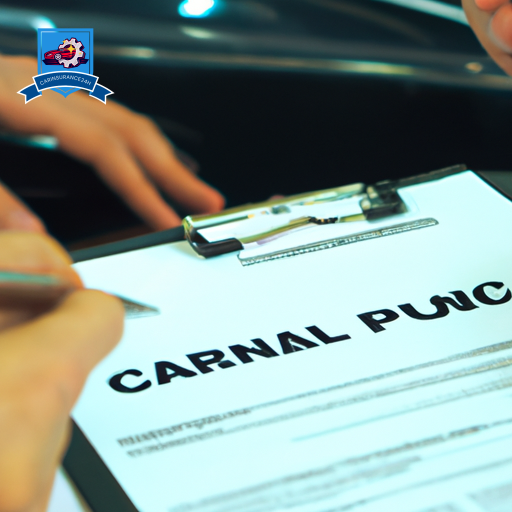In today’s complex and litigious society, protecting oneself from unforeseen liabilities is paramount. An umbrella liability policy offers an additional layer of defense beyond standard insurance coverage, providing a safety net in case of costly lawsuits or claims. Understanding the intricacies of umbrella insurance, including coverage limits, exclusions, and cost factors, is essential for making informed decisions about your financial security. Whether you are a homeowner, business owner, or simply seeking to safeguard your assets, delving into the realm of umbrella policies can be a wise step towards comprehensive protection.
What Is an Umbrella Liability Policy?
An Umbrella Liability Policy is a supplemental insurance that provides additional coverage beyond the limits of a primary policy. This type of policy offers extended protection and is designed to kick in when the limits of the underlying primary policies, such as auto or homeowners insurance, have been exhausted. Umbrella policies provide an extra layer of security by covering costs that exceed the limits of the primary policies, including legal fees, medical expenses, or property damage claims.
Policy benefits of an Umbrella Liability Policy include broader coverage options compared to primary policies, which may have limitations on certain types of claims. Umbrella policies typically offer higher coverage limits, which can range from one to five million dollars or more. This extended coverage can be crucial in situations where significant financial liabilities arise, such as a costly lawsuit.
Coverage options under an Umbrella Liability Policy can vary but commonly include protection against personal injury claims, property damage liability, and legal defense costs. Additionally, umbrella policies may cover situations that are not included in primary policies, such as libel, slander, or false imprisonment claims. By providing an extra layer of liability protection, an Umbrella Liability Policy offers peace of mind and financial security in the face of unexpected events.
Coverage Limits and Benefits
The coverage limits and benefits of an Umbrella Liability Policy play a crucial role in providing extended financial protection beyond primary insurance policies. Understanding the policy benefits, limits, coverage options, and scenarios is essential for individuals and businesses looking to safeguard themselves against unforeseen circumstances. Here are key points to consider:
-
Policy benefits and limits: Umbrella insurance offers additional liability coverage above the limits of a standard policy, such as homeowners or auto insurance. It provides protection in situations where the liability costs exceed the limits of primary insurance. This can include legal expenses, medical bills, and damages awarded in a lawsuit. Policy limits typically start at $1 million and can go up to $5 million or more, providing a significant safety net.
-
Coverage options: Umbrella policies can cover various liability scenarios, including bodily injury, property damage, landlord liability, and libel or slander. This comprehensive coverage extends to situations where the primary insurance may not be enough to cover all costs. For example, if a visitor is injured on your property and decides to sue for medical expenses and damages, an umbrella policy can help cover these costs beyond what your homeowner’s insurance would pay.
-
Scenarios: Umbrella insurance is especially beneficial for high-net-worth individuals, landlords, business owners, and professionals who may face increased liability risks. In scenarios where a lawsuit results in a large settlement, having umbrella coverage can protect personal assets, savings, and future income from being depleted to satisfy legal obligations.
Who Needs Umbrella Insurance?
Considering the potential financial risks associated with liability exposure, who should consider obtaining umbrella insurance to enhance their overall protection? Evaluating your risk exposure and insurance needs is crucial in determining if umbrella insurance is right for you. Individuals with significant personal assets may find umbrella insurance particularly beneficial as it provides an extra layer of protection beyond the limits of their primary insurance policies.
To help you assess whether umbrella insurance is a suitable addition to your insurance portfolio, consider the following factors:
| Factors | Considerations | Implications |
|---|---|---|
| Risk Evaluation | Evaluate the level of risk exposure you face, considering factors such as occupation, lifestyle, and potential for accidents or lawsuits. | Higher risk may indicate a greater need for umbrella coverage. |
| Insurance Needs | Review your existing insurance policies to determine if their coverage limits are adequate to protect your assets in the event of a significant liability claim. | Gaps in coverage could be addressed by adding an umbrella policy. |
| Cost Considerations | Compare the cost of umbrella insurance against the value it provides in terms of extended protection for your assets and financial security. | Balancing cost with potential benefits is essential in decision-making. |
Umbrella Policy Cost Factors
When considering an umbrella liability policy, understanding the cost factors is crucial. These factors include the determinants of the cost, methods used for calculating premiums, and the various coverage options available. By delving into these points, individuals can make informed decisions regarding their umbrella policy needs.
Cost Determining Factors
Several key factors play a significant role in determining the cost of an umbrella liability policy.
Factors influencing the cost of an umbrella policy include:
-
Coverage Limits: The higher the coverage limits you choose, the more expensive the policy will be due to the increased level of protection provided.
-
Risk Evaluation: Insurers assess the risk associated with your personal or business activities. Higher-risk activities may lead to a higher premium cost.
-
Underlying Policies: The types and limits of your underlying insurance policies, such as auto or homeowners, can impact the cost of your umbrella policy as it provides additional coverage beyond these policies.
Premium Calculation Methods
The method used to calculate premiums for an umbrella liability policy is essential in determining the overall cost of the coverage. Premium calculation methods typically involve a thorough risk assessment and premium analysis. Risk assessment evaluates the likelihood of a claim occurring based on various factors such as the policyholder’s industry, past claims history, and coverage limits. Premium analysis involves determining the appropriate premium amount to adequately cover the assessed risks while ensuring the policy remains affordable for the insured. Insurers use sophisticated actuarial models to assess risk accurately and set premiums accordingly. By utilizing these methods, insurers can offer competitive pricing while providing sufficient coverage for policyholders against potential liabilities.
Policy Coverage Options
Moving from the premium calculation methods to policy coverage options, understanding the factors influencing umbrella policy costs is crucial for policyholders seeking comprehensive liability coverage. When considering policy coverage options, there are several key factors that can impact the cost of an umbrella liability policy:
-
Policy comparison options: Comparing different umbrella policies from various insurers can help determine which offers the most suitable coverage at a competitive price.
-
Coverage enhancements: Assessing the need for additional coverage enhancements, such as increased limits or specialized protections, can influence the overall cost of the umbrella policy.
-
Risk assessment and policy customization: Conducting a thorough risk assessment and customizing the policy to align with specific needs can impact the premium cost of an umbrella liability policy.
How to Purchase Umbrella Coverage
Exploring the process of acquiring umbrella coverage involves understanding your existing insurance policies and evaluating your potential risks. To ensure you purchase the most suitable umbrella policy, it is essential to compare coverage options and customize your policy to meet your specific needs.
When considering purchasing umbrella coverage, start by reviewing your current insurance policies, including auto, homeowners, and any other liability coverage you have. Understanding the limits and exclusions of these policies will help you determine the appropriate level of umbrella coverage needed to fill potential gaps in protection.
Next, assess your potential risks to determine the amount of umbrella coverage required. Factors such as your assets, income, and lifestyle should be considered when deciding on the coverage limit for your policy. Once you have a clear understanding of your existing coverage and risk factors, you can begin the process of purchasing umbrella coverage.
To assist you in comparing different coverage options and customizing your policy, refer to the table below:
| Coverage Options | Policy Customization |
|---|---|
| Increased Liability Limits | Tailored Coverage Limits |
| Legal Defense Costs Coverage | Additional Endorsements |
| Worldwide Coverage Extension | Specialized Protection Options |
| Uninsured/Underinsured Motorist Coverage | Personalized Deductibles |
Claims Process and Coverage Scenarios
Navigating through the claims process and understanding various coverage scenarios is crucial for maximizing the benefits of an umbrella liability policy. To ensure a smooth claims process and optimal coverage, policyholders should consider the following key points:
-
Claims Processing Efficiency: Efficient claims processing is essential when dealing with an umbrella liability policy. Insurers offering quick and transparent claims processing can significantly reduce the stress associated with filing a claim. Policyholders should look for insurers with a reputation for prompt and fair claims handling to expedite the resolution process.
-
Coverage Analysis: Conducting a thorough analysis of the coverage provided by an umbrella policy is vital. Understanding the specific scenarios in which the umbrella policy will come into effect can prevent unexpected coverage gaps. Policyholders should carefully review their policy documents and seek clarification from their insurance provider to ensure they grasp the extent of their coverage.
-
Policy Adjustments: As circumstances change, policyholders may need to adjust their umbrella liability policy to align with their evolving needs. Whether it involves increasing coverage limits or adding additional endorsements, periodic policy reviews are crucial for maintaining adequate protection. Regularly reassessing the policy ensures that it remains relevant and effective in safeguarding against potential liabilities.
Exclusions and Limitations to Consider
Upon reviewing the coverage scenarios and claims process of an umbrella liability policy, it is imperative to address the exclusions and limitations that policyholders should consider to effectively manage risks and ensure comprehensive protection. Exclusions and limitations refer to specific situations or conditions for which the umbrella policy may not provide coverage or may have restricted coverage. Policyholders need to be aware of these limitations to make informed decisions regarding their risk management strategies.
Exclusions in an umbrella liability policy typically include intentional acts, contractual liabilities unless specified, and certain high-risk activities such as aviation or professional services. Understanding these exclusions is crucial as they can significantly impact the extent of coverage provided by the policy. Moreover, limitations in an umbrella policy may involve restrictions on coverage amounts for certain types of claims or requirements for underlying insurance policies to be maintained at specified levels.
Umbrella Insurance Vs. Excess Liability
When comparing umbrella insurance to excess liability coverage, it is essential to understand the key distinctions and implications for risk management strategies.
Key Differences Between Umbrella Insurance and Excess Liability Coverage:
-
Coverage Limits:
- Umbrella insurance provides coverage above and beyond the limits of primary policies like auto or homeowners insurance. It kicks in after the underlying policy’s limit is exhausted. In contrast, excess liability coverage only provides additional coverage and does not offer broader protection like umbrella insurance.
-
Scope of Coverage:
- Umbrella insurance typically offers a wider scope of coverage, including protection against lawsuits, libel, slander, and false imprisonment, which may not be covered by excess liability policies. Excess liability coverage generally follows the terms of the underlying policy without providing additional coverage benefits.
-
Cost and Flexibility:
- Umbrella insurance is usually more expensive than excess liability coverage due to its broader coverage. However, it offers greater flexibility and can be customized to suit individual needs. Excess liability coverage is more straightforward and cost-effective but may not provide the comprehensive protection that an umbrella policy offers.
Understanding these differences in umbrella coverage comparison and liability insurance can help individuals and businesses make informed decisions when selecting the most suitable coverage for their risk management needs.
Umbrella Policy Renewal and Updates
When it comes to Umbrella Liability Policies, understanding the renewal process and coverage limit adjustments is crucial. Policy renewal ensures continuous protection, while adjustments to coverage limits help align the policy with changing needs and risks. By addressing these aspects, policyholders can maintain adequate protection against unforeseen liabilities.
Policy Renewal Process
The process for renewing and updating an umbrella liability policy involves a comprehensive review and assessment of the policy terms and coverage limits. To ensure a smooth policy renewal process, consider the following:
-
Renewal Reminders: Stay informed about the policy renewal date to avoid any lapse in coverage. Renewal reminders are commonly sent by the insurance provider to prompt action.
-
Policy Updates: Evaluate if any changes in your circumstances necessitate updates to your policy. This could include changes in assets, liabilities, or additional coverage requirements.
-
Review Coverage Limits: Assess whether the current coverage limits align with your evolving needs. Adjust coverage limits as necessary to ensure adequate protection.
Coverage Limit Adjustments
Upon renewal of an umbrella liability policy, strategic adjustments to coverage limits should be carefully considered to ensure optimal protection aligned with evolving needs. Coverage enhancements should be evaluated to address any gaps in the existing policy and provide comprehensive coverage for potential risks. It is essential to review the policy exclusions to understand the scope of coverage and make informed decisions regarding necessary adjustments. By assessing the current coverage limits in relation to the evolving risk landscape, policyholders can ensure that their umbrella liability policy provides adequate protection. Regular reviews and updates to coverage limits are crucial to maintaining sufficient insurance coverage that aligns with changing circumstances and potential liabilities.
Tips for Maximizing Umbrella Protection
To enhance the effectiveness of your umbrella liability policy, it is crucial to implement strategic measures that optimize your coverage. Maximizing benefits and ensuring comprehensive coverage require careful consideration of various factors. Here are three essential tips for maximizing umbrella protection:
-
Regular Policy Reviews: Conduct regular reviews of your umbrella liability policy to ensure it aligns with your current financial and coverage needs. As circumstances change over time, such as increased assets or changing liability risks, adjusting your policy limits and coverage options accordingly can help maximize the benefits you receive. By staying up-to-date with your policy, you can ensure it provides adequate coverage in various scenarios.
-
Understand Coverage Scenarios: Familiarize yourself with the coverage scenarios outlined in your umbrella policy. Understanding the specific instances in which your coverage applies can help you make informed decisions and avoid potential coverage gaps. Knowing the limits and exclusions of your policy can empower you to take proactive steps to enhance your overall protection.
-
Work with an Insurance Professional: Consult with an experienced insurance professional to assess your umbrella liability policy comprehensively. An insurance agent or broker can provide valuable insights and recommendations tailored to your individual needs, helping you optimize your coverage for maximum protection. Their expertise can guide you in making informed decisions that align with your risk profile and financial objectives.
Frequently Asked Questions
Is an Umbrella Liability Policy Necessary if I Already Have Homeowners or Auto Insurance?
When evaluating the necessity of an umbrella liability policy alongside existing homeowners or auto insurance, it is crucial to consider the scope of coverage provided by each policy. A coverage comparison reveals potential gaps that may leave you exposed to significant financial risks. Conducting a cost analysis further aids in determining the value proposition of an umbrella policy. Understanding the complementary nature of these insurances ensures comprehensive protection against unforeseen liabilities.
Are There Specific Professions or Activities That May Require Higher Coverage Limits With an Umbrella Policy?
Certain professions and activities, such as doctors, lawyers, contractors, and owners of rental properties, may require higher coverage limits with an umbrella policy. These individuals face increased risks due to the nature of their work or the properties they own, making higher coverage limits essential for adequate protection. To safeguard against potential liabilities, it is crucial for these entities to carefully assess their insurance needs and consider additional insureds, while ensuring claims handling efficiency and possibly benefitting from discount bundling options.
Can I Add Additional Insureds or Entities to My Umbrella Policy?
When considering adding entities to your insurance policy, it’s important to review the coverage limits to ensure they align with your needs. Adding additional insureds can provide broader protection but may also impact premium costs. However, this can be a valuable investment to enhance your liability coverage and safeguard against potential risks. It’s advisable to consult with your insurance provider to determine the best approach for incorporating additional insureds while maintaining appropriate coverage limits.
How Does an Umbrella Policy Handle Claims That Exceed the Coverage Limits of My Primary Insurance Policies?
An excess liability policy, such as an umbrella policy, provides coverage that goes beyond the limits of primary insurance policies. When a claim exceeds the coverage limits of primary insurance, the umbrella policy steps in to cover the additional costs, up to the policy’s limit. Claim handling under an umbrella policy involves the insurance company taking over the management and settlement of claims that surpass the coverage limits of primary insurance policies, ensuring comprehensive protection for the policyholder.
Are There Any Discounts Available for Bundling Umbrella Insurance With Other Policies?
When considering insurance options, individuals may inquire about potential discounts offered for bundling various policies together. Understanding discount eligibility and bundling options can help maximize premium savings. Many insurance providers offer incentives for combining multiple policies such as home, auto, and umbrella insurance. By exploring different policy combinations, policyholders can potentially benefit from cost-effective solutions while ensuring comprehensive coverage across various aspects of their lives.

















